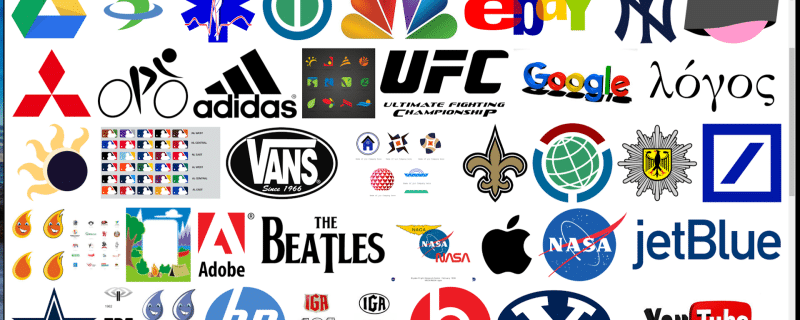NOTE: If you prefer that people respect your business rather than love your business, don’t waste time reading this article.
How do people perceive your company?
As a Personality, an Idea, or a Business? And does it even matter?
You bet it does.
The reason is short, simple and as powerful as a rabid rottweiler. Here’s why:
- People respect businesses
- People like ideas
- People love people
(Don’t misunderstand me. I’m not talking about what people think. I’m talking about how they feel.)
So, what’s this mean to you?
When people perceive your company as a business, they don’t form emotional connections with it. Lacking emotional connections, they abandon you the instant a better offer comes along.
After all, it’s just business. Right?
As a business, you’re just one among hundreds or even thousands of choices. You’re not special.
“But nobody does it like we do! We have the best customer service.”
Maybe so. But great customer service can be copied. So can great quality. So can a great warranty. So can a great price. Know this: anything that can be copied will be copied. And that makes you vulnerable.
On the other hand, how would it be different if people viewed your business through the lens of Personality?
 As Captain and Tennille reminded us: it ain’t respect that keeps us together, it’s love.
As Captain and Tennille reminded us: it ain’t respect that keeps us together, it’s love.
There’s Only One “You”
Ask any happily married couple, “why do you love your partner?” The answer is almost always the same. “There’s no one else in the world like them.”
In other words, this person I love is completely unique. They are one-of-a-kind, irreplaceable. Nothing will persuade them to walk away from that relationship.
What if someone younger, hotter, & sexier comes along? Nope.
What if they have thicker hair, better table manners, and season tickets to That Thing She Loves? Nope. Ain’t happenin’.
But why? Why the irrational devotion? Why such unshakeable loyalty?
Because of what they feel. “There’s no one else in the world like them.”
You can create that sort of fanatical loyalty in your customers. But first, you must change the perception of your company. You must take steps to allow the world to perceive your business as a Personality. Not a Business. Not even an Idea. A Personality.
See, businesses can be copied. People can’t.
Start Getting Trigger Happy
So, how do you position your company as a Personality that people can love? It’s surprisingly simple. (Note that I said “simple.” I did not say “easy.”) You must learn to use the loyalty reflexes.
Allow me to explain.
Just as the human body comes equipped with a set of reflexes, so does the human mind. Humans have 5 automatic psychological reflexes that trigger feelings of love and loyalty. When you trip one of those psychological triggers, you get a very predictable emotional response.
Faces are one of those five psychological triggers. (The other four are Story, Anchors, Ritual and Keywords.) When we see a face, we experience a predictable emotional response: attraction.
It’s not a choice we make. It’s a reflex.
In contrast, when we see inanimate objects, (like say… your logo), we don’t have any sort of reflexive response. It’s just visual static.

Multiple scientific studies demonstrate this fact.
A report by the National Institute of Health states, “In simple tests of preference, infants as young as newborns prefer faces and face-like stimuli over distractors.” Furthermore, the attraction to faces strengthens with age.
Stanford researchers Anthony Norcia and Faraz Farcin studied how babies respond to faces. Using a technology called “passive EEF” to scan babies’ brains, they found that…
“As early as four months, babies’ brains already process faces at nearly adult levels, even while other images are still being analyzed in lower levels of the visual system.”
Our brains are hard-wired to prefer faces over abstract objects. This preference is there from birth. It grows stronger with age. It is consistent across all races, cultures, genders and ethnicities.

Faces capture attention and provoke emotion. Abstract objects don’t. So, where are the faces in modern corporate logos?
“Branding experts” routinely ignore the overwhelming weight of this scientific evidence. Instead, they give us swishy, swoopy abstractions – what the NIH report calls “distractors.”
Distractors don’t attract the brains of babies. They don’t attract adult brains either.
How to Take the First Step
Do yourself a favor: look at your logo. Does it have a face? If not, go hire a skilled graphics designer right now. Tell them to mockup a version of your logo that includes a face.
(Need a graphic designer: this guy and this guy are two of the best.)
Literally any face is better than none. The face can be a photo, a painting, a drawing, a cartoon. It can be a person, an animal or even an imaginary beast. (Think of the Geico Gecko or the Lucky Stars Leprechaun.)
One important note: Our brains use a specific template to identify objects as “a face.” At minimum, the image must have two eyes with a nose or mouth centered below them. It forms an inverted triangle shape, like this:

Faces in profile don’t have the same effect. Don’t use a face in profile.
Now, will the mere presence of a face automatically make people feel love towards your brand? Not all by itself, no. But the addition of a face is a step in the right direction. And it’s easy to do.
The more Loyalty Reflexes you trigger, the stronger and longer lasting will be the emotional reaction.
To answer the initial question: Yes, your logo should have a face.

When you’re ready for more unique ideas about how to turn your boring brand into a lovable, personable powerhouse, let’s talk.
- Shared Suffering: The Missing Ingredient in Customer Loyalty - June 25, 2025
- The Unignorable Jingle: Win Hearts & Customers in 8 Seconds - June 17, 2025
- The Metric Trap Sabotaging Your Marketing - April 17, 2025
